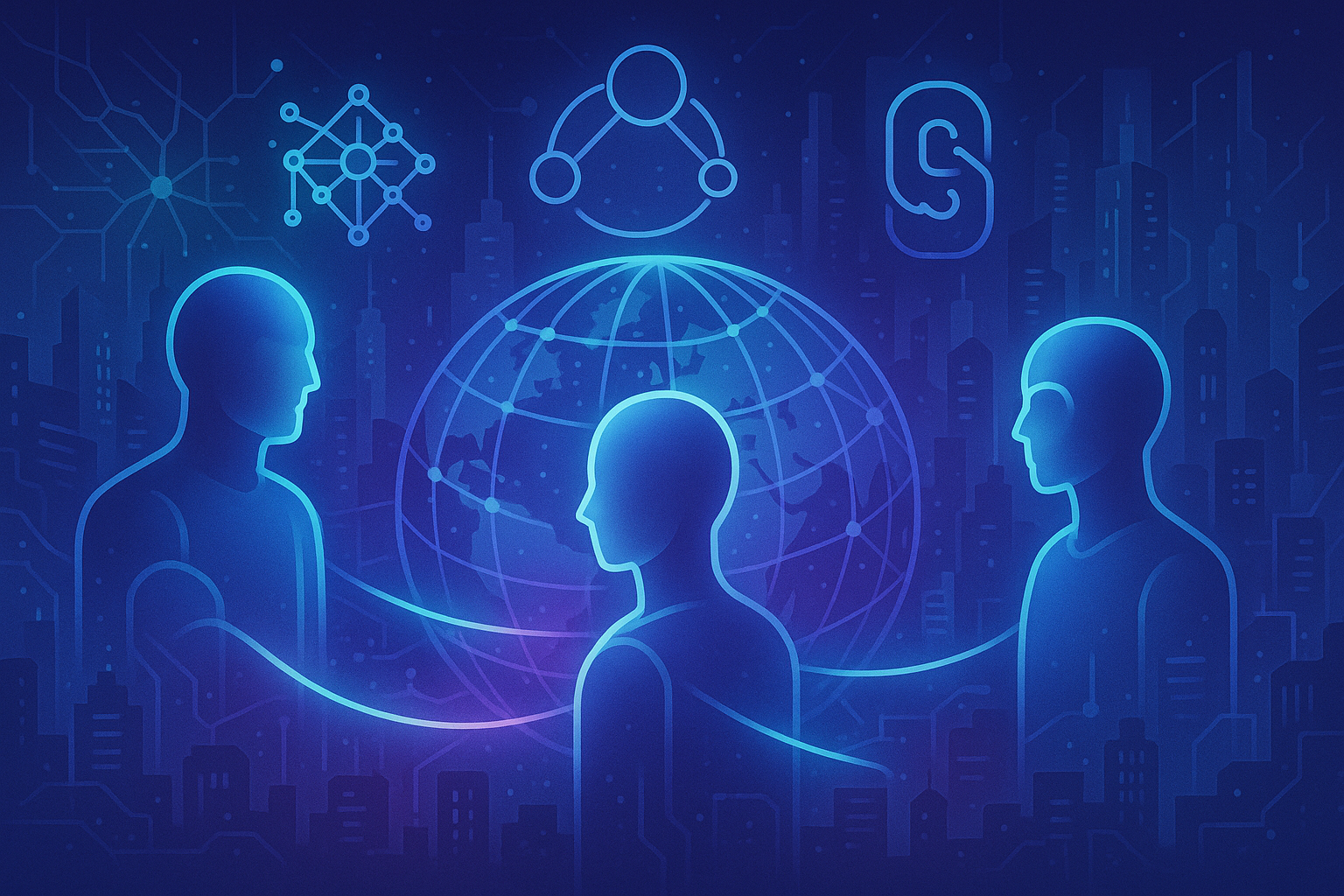As we stand at the cusp of a new era in artificial intelligence, agentic protocols are emerging as the foundation for how AI systems will communicate, collaborate, and create value in the future. This article explores the key trends shaping this transformation.
The Rise of Agent-to-Agent Communication
The future of AI isn't just about individual agents becoming more capable—it's about how they work together. Agent-to-Agent (A2A) protocols are establishing the groundwork for a new internet of AI services, where specialized agents can discover, negotiate with, and leverage each other's capabilities.
- Standardized communication protocols enabling seamless agent interaction
- Discovery mechanisms for agents to find and utilize specialized services
- Trust and verification systems for agent-to-agent transactions
Key Protocol Trends to Watch
1. Model Context Protocol (MCP)
Anthropic's MCP is pioneering how AI agents interface with traditional systems. We're seeing rapid adoption across:
- Database integrations enabling semantic queries
- API wrappers that make services AI-native
- Tool ecosystems that expand agent capabilities
2. Natural Language Web Interfaces
Microsoft's NLWeb and similar initiatives are transforming how agents interact with web content:
- Websites becoming queryable knowledge bases
- Dynamic content extraction and understanding
- Bi-directional communication between agents and web services
3. Decentralized Agent Networks
The future points toward decentralized architectures where:
- Agents operate autonomously without central control
- Peer-to-peer protocols enable direct agent collaboration
- Blockchain and distributed ledgers ensure trust and accountability
Industry Impact and Applications
These protocol advancements are already reshaping industries:
"By 2030, we expect 60% of business processes to involve some form of agent-to-agent collaboration, fundamentally changing how enterprises operate." - Industry Analysis Report
Healthcare
Specialized medical agents collaborating on diagnosis and treatment plans, sharing insights across institutions while maintaining patient privacy.
Finance
Trading agents negotiating complex transactions, risk assessment agents providing real-time analysis, and compliance agents ensuring regulatory adherence.
Research and Development
Scientific agents accelerating discovery by automatically running experiments, analyzing results, and collaborating with other research agents globally.
Challenges and Considerations
As these protocols evolve, several challenges must be addressed:
- Security: Ensuring agent communications remain secure and tamper-proof
- Privacy: Protecting sensitive data while enabling agent collaboration
- Governance: Establishing rules and standards for agent behavior
- Interoperability: Ensuring different protocol implementations can work together
Looking Ahead: The Next Five Years
Based on current trajectories, here's what we can expect:
- 2025-2026: Widespread adoption of MCP and similar protocols in enterprise settings
- 2027-2028: Emergence of agent marketplaces and standardized discovery mechanisms
- 2029-2030: Fully autonomous agent networks handling complex multi-party transactions
Preparing for the Agentic Future
Organizations and developers should start preparing now:
- Experiment with existing protocols like MCP in pilot projects
- Design systems with agent interoperability in mind
- Invest in understanding the security and governance implications
- Build teams with expertise in both AI and distributed systems
Conclusion
The evolution of agentic protocols represents more than just a technical advancement—it's a fundamental shift in how we think about AI systems. As these protocols mature, they'll enable a new generation of AI applications that are more capable, collaborative, and transformative than anything we've seen before.
The organizations that understand and embrace these trends today will be the ones shaping the AI-powered economy of tomorrow.
